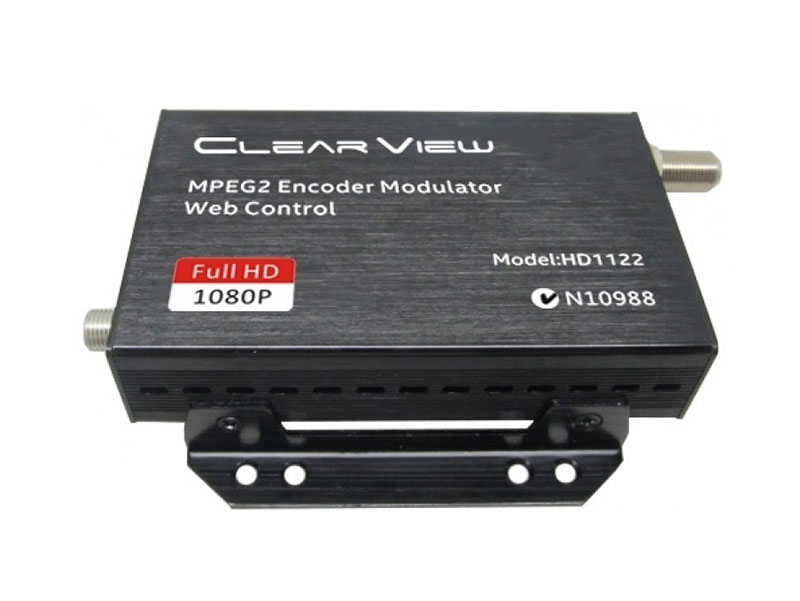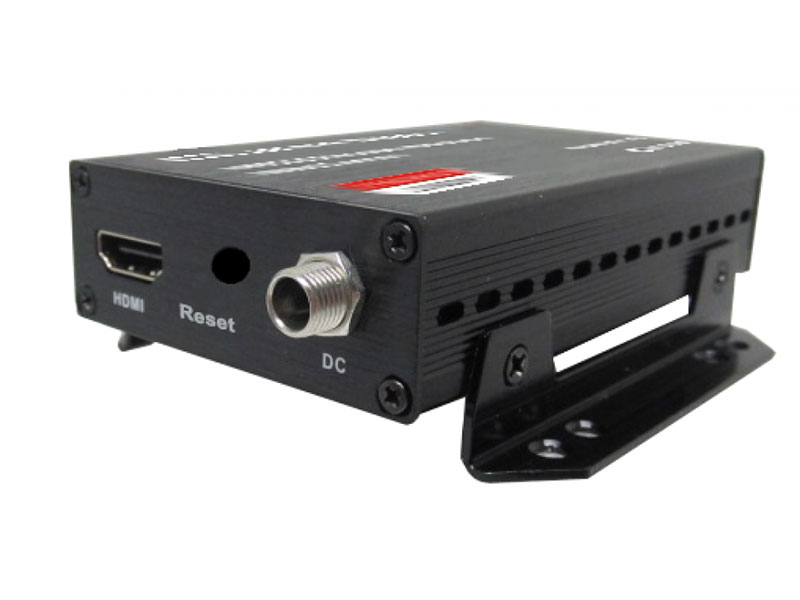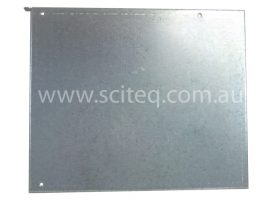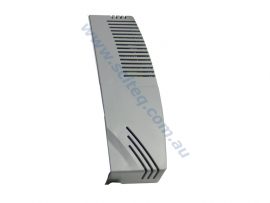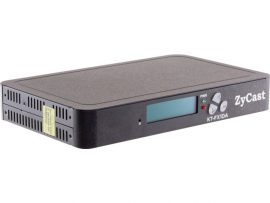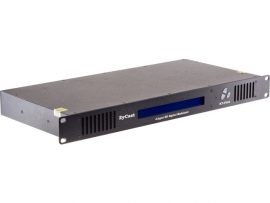Description
Clearview HD1122 MPEG2 Single HDMI HD DVBT Modulator
This Clearview HD1122 HDMI modulator can convert a 1080p HDMI Signal to a MPEG DVB-T RF Signal.
Features
- Supports output resolutions up to 1080p
- Web GUI Control ONLY
- Small size and Light weight
- Supports wall-mounting
- Good ventilation for the device
- Rack Position for Installation of multiple units onto your TV system
- Works well on Foxtel Live Sports
- Low Latency Setting down to 100 milliseconds
Specifications
Encoding Section-Video
Encoding MPEG2
Interface HDMI x 1
Input Resolution PAL,NTSC 720@50p, 720@60p
1080@50i/p,1080@60i/p
Output Resolution 1080@30p Maximum
Bit rate 2-20Mbps
Encoding Section-Audio
Encoding MPEG-1 Layer2, AAC, AC3
Sample rate 48KHz
System
Management Web GUI via Browser
Language English
Upgrade USB Menu Configuration
Basic RF range/Service Name/RF attenuation/ LCN
Advanced Service provider/Network ID/ONID/TS ID/Service ID
PMT PID/VPID/APID/PCR PID/Network
Modulator Section
MER Typ. 35dB
RF range 50-950MHz, 1KHz stepd RF output level
Level 100dBuv (70-100 ADJ) Standard
System DVB-T
Bandwidth 6M, 7M, 8M
Constellation QPSK, 16QAM, 64QAM
Code rate 1/2, 2/3, 3/4, 5/6, 7/8
Guard interval 1/4, 1/8, 1/16, 1/32
FFT 2K, 8K
General
Power supply 12V1A
Dimensions 128 x 77 x 28mm
Weight 350g
What’s the difference between MPEG2 and MPEG4?
DVB-T (Digital Video Broadcasting – Terrestrial) is a standard for transmitting digital television signals over terrestrial (over-the-air) broadcast networks. MPEG-2 and MPEG-4 are video compression standards used in DVB-T to encode the video content.
- DVB-T MPEG-2: DVB-T MPEG-2 refers to the use of the MPEG-2 video compression standard within the DVB-T system. MPEG-2 is an older compression standard that was widely used for digital television broadcasting before the introduction of MPEG-4. It offers moderate compression efficiency, which means it requires more bandwidth to transmit video compared to MPEG-4 for the same quality. MPEG-2 provides good video quality, especially for standard definition (SD) content, and it is still compatible with many older television sets and receivers.
- DVB-T MPEG-4: DVB-T MPEG-4, on the other hand, uses the more advanced MPEG-4 video compression standard. MPEG-4 offers better compression efficiency, allowing broadcasters to transmit higher quality video using less bandwidth compared to MPEG-2. This is especially beneficial for high-definition (HD) and other bandwidth-intensive content. MPEG-4 can deliver superior video quality with the same amount of data or equivalent video quality with less data compared to MPEG-2. However, MPEG-4 requires more processing power for encoding and decoding, which means older television sets or receivers may not support MPEG-4 without a compatible decoder.
In summary, the main difference between DVB-T MPEG-2 and DVB-T MPEG-4 lies in the video compression standard used. MPEG-2 is an older standard with moderate compression efficiency but good compatibility with older devices, while MPEG-4 is a more advanced standard offering better compression efficiency for higher quality video but requiring more processing power and compatibility considerations.
How can I tell if my TV is MPEG2 or MPEG4?
Early digital TVs sold in Australia had MPEG2 DVB-T Tuners. Later models have progressed to MPEG4. Any MPEG4 TV will work with MPEG2 signals. However MPEG2 TVs will not work with MPEG4 signals including those from MPEG4 modulators.
It is often difficult to see from the TV’s specifications if the hardware is MPEG2 or MPEG4. The easiest way is to test the TV with a normal broadcast antenna signal. New HD Channels such as Channel 70 (7HD) or Channel 31 (SBS Viceland HD) are broadcast in MPEG4. If your TV produces a black picture or an error message such as FORMAT NOT SUPPORTED, then this TV is MPEG2 only.
To correct a MPEG2 only TV, a new DVB-T Set Top Box can be used to tune the RF signal and convert it to a HDMI input on the TV.

